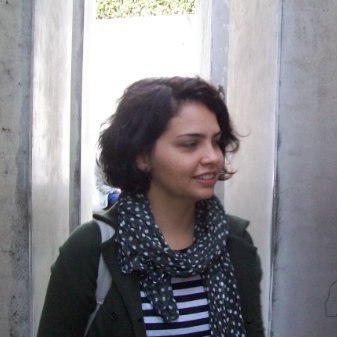Amanda Bonan

In 2022, 41 contemporary art curators, researchers, and museum directors from 24 different countries were awarded to attend the CIMAM 2022 Annual Conference. The CIMAM 2022 Annual Conference, titled "The Attentive Museum. Permeable Practices for a Common Ground", was held in Mallorca (Balearic Islands), Spain on 11–13 November, hosted by Es Baluard Museu d'Art Contemporani de Palma.
Amanda Bonan's Conference Report
Agustín Pérez Rubio said on the second day of debates that he had heard more questions than answers. I propose here to report precisely on the questions raised by some of the speakers at the CIMAM 2022 Annual Conference in Palma, which made us reflect during the 3 days of meetings. I do not promise to bring the answers.
The first table began with Bart de Baere asking: “are contemporary art museums, museums?” It seems like a simplistic question, but its context involves thinking about the so rigid art institutional structure that is commonly linked to bureaucracies and closed models of collecting and exhibition. Baere's question leads us to another one: could contemporary art then transform museums from the inside, structurally? Would this transformation be such that the essence of the institution would then be transformed? For Baere, it is necessary to “lead museums governance to see from our perspective, the perspective of art”.
Meskerem Assegued Bantiwalu goes one step further and urges us to treat museums holistically. Founder of Zoma Museum, in Ethiopia, she describes the transformation of polluted land in Addis Ababa into a botanical garden where her museum is built and addresses a broad question: what is it to be human? She says that for humans there is no restriction in the dream. And I ask: Is dreaming what unites us as humans? How to still think about universal humanity?
“How can we articulate ourselves with other regions?” asked Iris Dressler. “To question the success story of our [Western] institutions” is necessary to deconstruct the Occident, through a decolonial agenda and a feminist position. Specifically for Germany, the must is to fight anti-Semitism globally. She affirmed this in the face of the controversies of the last Documenta. But perhaps your most important question was “What kind of violence are we reproducing?” This question still resonates.
Opening the speeches of the second day, Denise Ferreira da Silva pointed to the operations of coloniality and patriarchal power in criticism. In response to Agustín Pérez Rubio, who proposed: “changing the Eurocentric perspective of the museum from within, from its governance”, Denise replied that it is necessary “to formulate the questions in a proper way. Anti-capitalist and anti-colonialist questions”. By exhibiting the works of artists Zinzi Minott and Paulo Nazareth, Denise may help us to glimpse what anti-colonial questions these would be: “what kind of slave would I be?” asks Minott; “what is the color of my skin?”, asks Paulo Nazareth. Both tackle the colonial question ironically, as it should be.
Clementine Deliss proposed practical solutions to face the consequences of traumatic colonialism. “What to do with the millions of ethnographic objects that enrich the collections of museums in the West?” According to her, for a museum to be decolonial it would need to be open to non-paid programs for everyone, re-accessing dormant collections (colonial archives, ethnography collections) for a decolonial education. The public changes from consumers to students, regardless of age. Perhaps her initial question is not being formulated in an anti-colonial way, in essence, as Denise Ferreira proposes. Being an object of study by the West is a déjà vu for the “Non-Western”. Objectifying the Other is characteristic of colonial operations and the “studies” were effectively used to legitimize all sorts of violence. I propose, following Denise Ferreira, new questions naming the objects differently: What to do with millions of looted objects that belong to other cultures and that still enrich Western museums today? Why do ethnographic museums need to persist in objectifying and violating other cultures? Why not face, without cynicism, the issue of repatriation of these objects? Exoticism continues in full force.
Sethembile Msezane made a speech that was more sensitive to the desires of post-coloniality. “What could affect your museum?”, asks the artist when showing us her work Signal Her Return III, with some lighted candles. On the occasion of its participation in a museum, the candles could not burn, due to security measures. Faced with this, “When art enters into the museum, does this mean that they are not allowed to be alive?”, she asked. Are we facing the death of the purpose of the objects in the museum and, consequently, the death of the subject's aspirations, and, finally, the death of the dream, due to security measures?
On the third day, artist Emily Jacir's speech followed by Lada Nakonechna made us realize that sometimes dreams have deeper restrictions. “We are not in post-colonialism, we are in apartheid in full colonialism”, said Jacir about the context of Palestinian cultural survival. “Some practices require time and we didn’t have time enough”, said Nakonechna about the survival of time arts in Ukraine. How to keep dancing in the middle of a war? Without further questions, she asked for a moment of silence.
Phillip Rizk, after several audios of popular movements, demonstrations, cries for justice, and the defense of human rights addressed us: “Did you hear that?” How can we act with such urgency today?” He reminded us of the climate crisis, wars, misery, and the end of the world as we know it. The museum in the real world needs to take a stand. “Why do we not consider sabotage?”, is a question that sounds politically unfeasible for museums run by sponsoring companies.